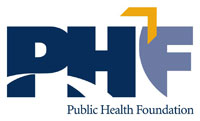The field of public health is one that has a wide range of opportunity for those who want to help others while earning a good salary. But sometimes, going beyond patient care is important. Helping the community understand what good health is and how to achieve it is a major part of public health, and becoming a public health teacher is a good way to help ensure that the public can enhance their level of understanding about their health and the health of their families.
Becoming a public health teacher is something that takes a bit of effort, but that has great rewards. With good pay, great job growth potential, and the ability to help others enhance their future, it’s a career that could be perfect for you. Keep reading to learn more about what it involves and what it has to offer.
What Is a Public Health Teacher?
A public health teacher is a professional educator who focuses on teaching children and adults about health oriented subjects. They’ll usually focus on improving the health of the public by educating them about healthy lifestyle choices, proper fitness, and any issues that may exist within the community. They could also work in a school as a gym or physical education teacher. Common job duties include the following:
- Identifying and understanding health issues and risk factors within a population
- Developing educational programs and initiatives that focus on overcoming those issues
- Delivering lessons to students in a classroom or community setting
- Helping develop literature and other educational resources that assist in educating the public about health issues
- Following any required curriculum or policy regulations at all times
The specifics of what you’ll do will vary depending on your employer, your position, and what kind of health related issues may exist within a community. In schools, the age of the students will also have an impact on your daily duties. It is a very diverse job with many different opportunities.
Characteristics
Your own education and experience will have a big part to play in your ability to succeed as a public health teacher, but some personal traits will help as well. Strength in the following areas is important.
- Communication – You’ll spend much of your time delivering lessons to students, and strong communication is important.
- Patience – Some students are in need of more time and attention than others. Having patience and an even temper is important.
- Motivation – Since you won’t’ constantly have a supervisor in the room with you, being self-motivated and disciplined is a major trait that you should have as well.
Nature of the Work
An average day in the life of a public health teacher will depend largely upon where they’re employed and what their employer expects of them. Time may be spent in a classroom setting or in a gym overseeing students as they exercise or learn more about the field of health. Time in an office developing new teaching strategies is another common part of the day, as is meeting with superiors and co-workers to help gain a better idea of what areas should be focused on.
Usually, you’ll find work in a school or school system. But some local governments also employee public health teachers and utilize their skills in community outreach programs, helping target different health issues within the community by enhancing education and awareness.
Education and Training
Becoming a public health teacher will require that you hold at least a bachelor’s degree in the field of education. In some instances it may be required that you hold a bachelor’s in both education and the public health field, but at the very least you’ll want to be competent in the health field and have taken classes directly related to public health in some way. You’ll also need to have teacher certification in nearly any situation, and exams may be required to teach health.
Overall salaries are about $52,000 per year, while those teaching in a community setting will make slightly less. The specific pay depends on your job experience and on your employer. The job outlook is strong, however, and the rate of growth is projected to be about 37% over the next several years, a rate that is well above the national average.








